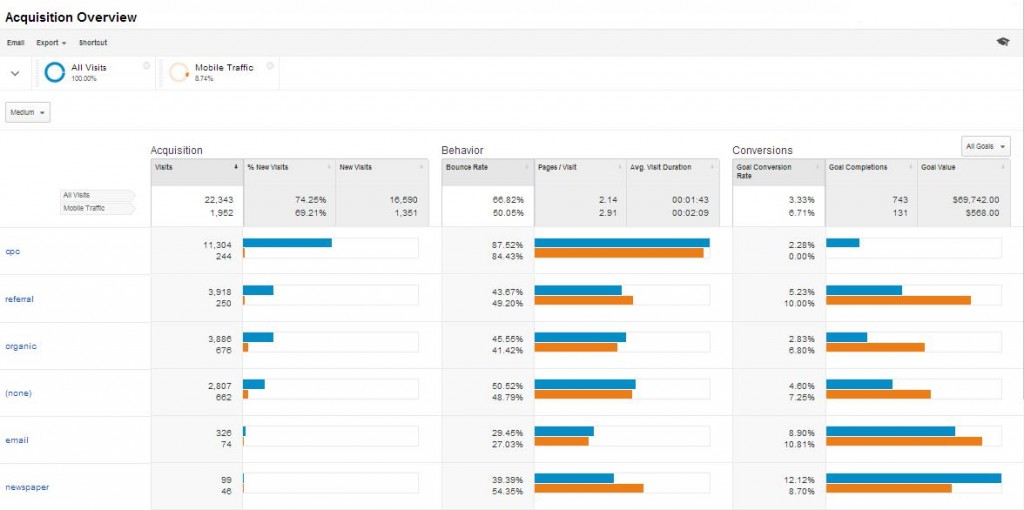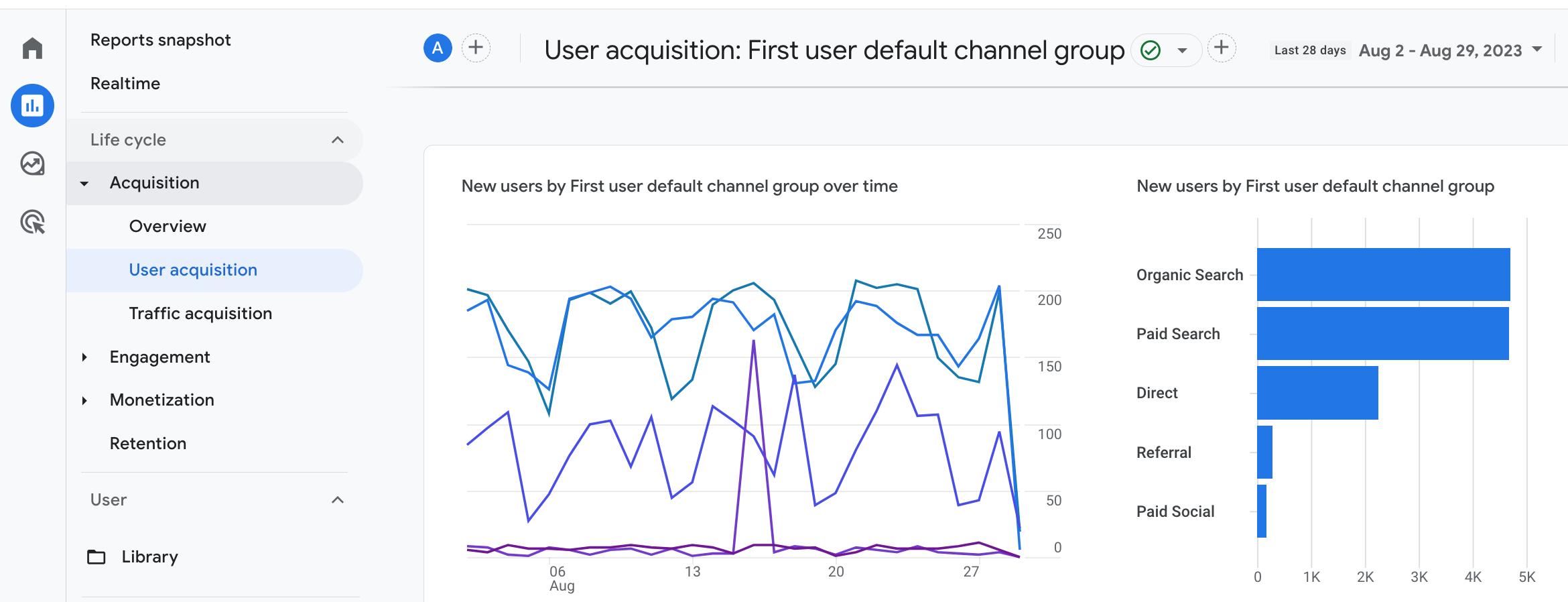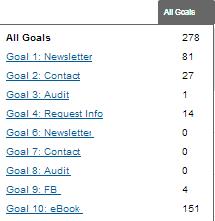If you are a typical college or university marketer who checks in once and a while with Google Analytics (GA) to see how your website and related marketing are doing it’s really hard to keep up on all of the changes that Google is implementing. Even more importantly, it’s hard to interpret what these changes mean with respect to how you should use analytics to optimally track and manage your online activities.
Google has made a recent, significant change to what was known as Traffic Sources, that I think is a really positive step in the direction of helping marketers gain a better macro understanding of visitor activity on their sites.
So here’s a quick primer of what they’ve done with the new Acquisition report, along with a few observations on what it might mean to you.
The new Google Analytics Acquisition Reports
The “Traffic Sources” reports area in GA has been revised and is now know as “Acquisition”. When you drill down into this section, the information that’s available to you is the same as what you had before but it’s how the information is organized, at an overview level, that has changed significantly, and I believe, to your business advantage.

This new report introduces what Google calls the Acquisition-Behavior-Conversion (ABC) cycle. In a nutshell it presents how you acquire visitors, their behavior on your site after acquisition, and their conversion activity.
As I mentioned, all of this info was previously available to you in other ways, in other reports. The real beauty of this new view into your inbound data, at least in my opinion, is the broad and intuitive summary into what’s working in your marketing to attract visitors and which of those visitors are converting on your business goals. I really value the direct linkage of traffic sources to goal value. Of course, the whole Conversions section will be empty if you don’t have any goals, (or ecommerce), set up for your website. If you don’t have them, now is the time to get your Goals defined and set up or you will miss out on this valuable look into your visitor’s behavior.

Other Important Elements of this Report Include:
- Completely editable channels. You can customize the channels that are provided or create you own, for example, maybe a channel for all of your off-line traffic sources, like print ads , brochures, or recruitment events. In the first example above, newspaper advertising is set up as a specific channel.
- You can view specific goals achieved against their source channels, for example, which channel produced the most visitors that requested an information package or registered for a online course. The example above presents “All goals” for a site but this is easily reset in the drop down menu to one specific goal you might like to look more closely at.

- Secondary segments can be easily added to your report view, similarly to how they are added to other reports, allowing you to easily compare different aspects of your inbound traffic across acquisition channel, behaviour and conversion. Above, I have added mobile as a secondary channel, (the brown bars under the blue), allowing us to compare the results we get with all traffic versus that for mobile only. This is useful when looking at the email channel, for example, where the conversion rate is higher for mobile versus all traffic, which makes sense.
- Because these “channel” groupings are new to how GA tracks information, data on channels is not available before July 25, 2013, so unfortunately historical comparisons with time periods in the past is not possible.
One of the biggest challenges that we all have, as a Google Analytics users, is to learn how to focus our time and efforts on what is most important to meeting the business objectives of your higher ed institution. I know this from lots of personal experience, as I too have spent hundreds of hours navigating around in GA, learning the tool, looking for insight, or simply lost in the detail. This report is a great organizer of important information that you can use as a starting point to monitor your important inbound initiatives and for focusing your efforts on high potential optimization opportunities.
I’d love to hear what your initial reaction is to Google’s new ABC model and this new report view into your site’s visitors. Do you see it being valuable to you?






